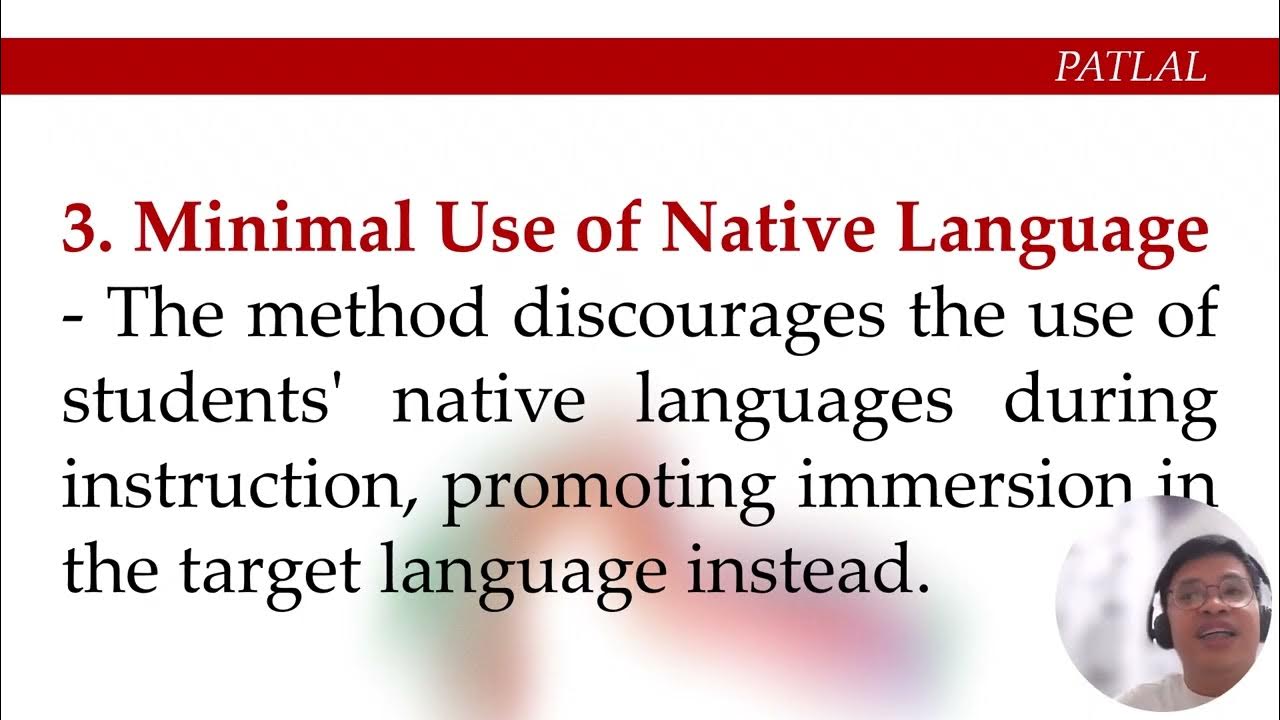Teacher Centered versus Learner Centered
Summary
TLDRThe script discusses the two primary teaching approaches: teacher-centered and learner-centered instruction. It highlights the differences between these methods, emphasizing that while teacher-centered instruction is instructor-driven, learner-centered instruction focuses on student interaction and autonomy. The script also provides insight into how to identify which method a student prefers based on their feedback. It suggests a balanced, multifaceted approach, acknowledging that students may need both types of instruction at different times in their learning journey, and stresses the importance of guiding students to accept both approaches.
Takeaways
- 😀 Teacher-centered and learner-centered instruction represent two different approaches to teaching, each with its own benefits and challenges.
- 😀 Teacher-centered instruction focuses on the instructor, with students listening, working alone, and receiving direct correction and evaluation from the teacher.
- 😀 Learner-centered instruction emphasizes student involvement, with more group work, self-directed learning, and less instructor monitoring.
- 😀 In a teacher-centered approach, the teacher controls the topics, the language used, and how students' learning is evaluated.
- 😀 A learner-centered approach encourages students to interact with each other, make choices about topics, and evaluate their own learning while the instructor provides guidance and feedback.
- 😀 Verbal cues from students, such as frustration with too much autonomy or a lack of engagement, can indicate whether they need more teacher-centered or learner-centered instruction.
- 😀 Students who express dissatisfaction with the teacher not providing enough direction likely prefer a teacher-centered approach.
- 😀 Students who prefer to explore topics independently or feel discouraged by too much lecture might benefit from a more learner-centered approach.
- 😀 Balancing both teacher-centered and learner-centered instruction is essential to cater to students' diverse learning needs and preferences.
- 😀 It's important to be transparent with students about the instructional approach being used and inform them when they can expect more of one type of instruction, depending on their preferences.
Q & A
What is the primary difference between teacher-centered and learner-centered instruction?
-Teacher-centered instruction focuses on the instructor as the primary source of information, where students listen and work individually, while learner-centered instruction emphasizes both student and teacher interaction, with students actively participating through group work and self-assessment.
How does the role of the teacher differ in the two approaches?
-In teacher-centered instruction, the teacher controls the learning process, chooses topics, and provides corrections. In learner-centered instruction, the teacher acts more as a guide, allowing students to interact with each other and take on more responsibility for their learning.
What are some characteristics of a teacher-centered classroom?
-In a teacher-centered classroom, the instructor does most of the talking, students work alone, and the teacher monitors and corrects all student responses. The classroom environment is generally quiet.
How is a learner-centered classroom different in terms of student interaction?
-In a learner-centered classroom, students interact with the teacher and each other, often through group work or pair activities. Students have more autonomy and the teacher provides feedback as questions arise, without constant monitoring.
What types of feedback do students receive in teacher-centered vs learner-centered instruction?
-In teacher-centered instruction, feedback is immediate, as the teacher monitors and corrects every student response. In learner-centered instruction, feedback is given when necessary, with a focus on self-assessment and peer feedback.
How can a teacher determine whether a student prefers a teacher-centered or learner-centered approach?
-A teacher can ask open-ended questions about the lesson, such as what students liked or disliked. Responses indicating frustration with lack of direction might suggest a preference for teacher-centered instruction, while frustration with too much structure could indicate a desire for a learner-centered approach.
What should a teacher do if a student expresses frustration with one instructional approach?
-The teacher should communicate openly with the student, explaining that there will be opportunities for both approaches throughout the course. Teachers can also adjust future lessons to balance the student's needs.
Why is it important for students to experience both teacher-centered and learner-centered approaches?
-It is important because students will encounter both approaches throughout their lives, and experiencing both allows them to develop a range of skills, from independent learning to understanding structured guidance.
What might a student say if they prefer a more teacher-centered approach?
-A student who prefers teacher-centered instruction might say things like, 'The teacher never taught me anything,' or 'I didn’t get clear answers to my questions,' indicating frustration with too much autonomy.
What are some common responses from students who prefer a learner-centered approach?
-Students who prefer a learner-centered approach might say things like, 'There was too much lecture,' or 'I didn’t have time to think for myself,' showing that they desire more independence and exploration in their learning.
Outlines

此内容仅限付费用户访问。 请升级后访问。
立即升级Mindmap

此内容仅限付费用户访问。 请升级后访问。
立即升级Keywords

此内容仅限付费用户访问。 请升级后访问。
立即升级Highlights

此内容仅限付费用户访问。 请升级后访问。
立即升级Transcripts

此内容仅限付费用户访问。 请升级后访问。
立即升级5.0 / 5 (0 votes)






